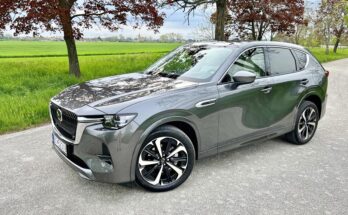Some time ago , we had the opportunity to test the CX-thirty with a classic naturally aspirated engine, front-axle drive only and an automatic transmission. However, the Mazda importer also pleased us with a top-equipped car with an interesting Skyactiv-X engine, which combines the characteristics of petrol and diesel units. Thanks to this technology, it should have lower consumption and higher performance. So let’s see if this technological innovation lives up to its hype on social networks and marketing materials…
First, let’s recap what makes the CX-30 so unique. It is 125 mm longer and 20 mm wider than the CX-3, but 150 mm shorter and 45 mm narrower than the CX-5 . It therefore fits exactly in the middle between these two segments and perfectly fills a gap in the market. For me personally, the ideal size for the city and for a trip.

The appearance of the CX-30 was largely inspired by the Mazda 3 , it has an elegantly smooth body without any moldings or unnecessary distracting elements. Compared to the compact hatchback, however, it receives significant protective coating, which, in my opinion, could be more modest, especially around the wheel arches. A sympathetic detail are the pulsating indicators, the front ones of which are not part of the standard headlights and the designers placed them all the way to the bottom of the bumper.
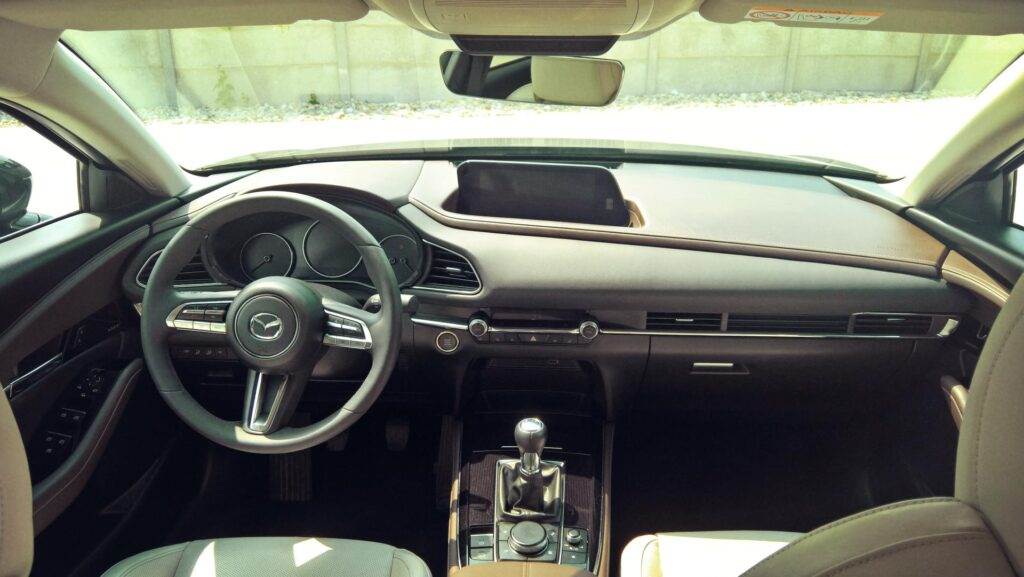
The driver’s workplace also looks clean and tidy. Mazda still rejects the style of huge touchscreens and stays true to conventional buttons. A physical shortcut in the form of a button or rotary control is available here for all the functions you use every day. For example, the lane keeping assistant can be turned on and off with a button directly on the steering wheel, so it can be easily called for help on the highway and simply deactivated on the exit from it so that it does not interfere with steering. At the same time, the interior is not “too many buttons” but, on the contrary, is very ergonomic. The same applies to the combination of analog (or analog-looking) alarm clocks and additional displays – simplicity and clarity reign here as well. Compared to some Sci-Fi dashboards of other automakers, it’s a big difference and Mazda is obviously targeting a more conservative clientele.
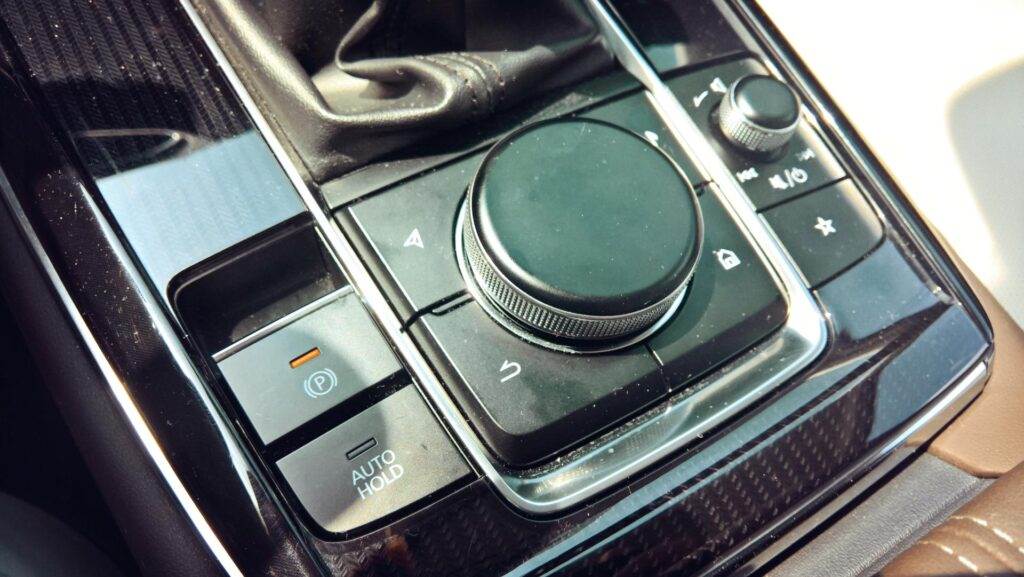
Of course, if you want, you can also use your finger to fumble with the eight-inch display of the multimedia system in the dashboard chapel. It won’t do you any good – it’s not touch-sensitive. However, the menu is really clear, the movement in it is intuitive and everything is controlled by an omnidirectional moving wheel on the center console, around which there are three fixed buttons and one programmable shortcut. In addition to top-quality workmanship, the spaciousness in both lines will also please you. With my 186 cm, I have enough space above my head and in front of my knees in the second row. An ordinary family with two children can also take a vacation in Croatia here.
But let’s go to the most important and more interesting element in this particular piece.
The most innovative element of the Mazda CX-30 is hidden under the front hood. The CX-thirty can be petrol or diesel, it can be naturally aspirated or turbocharged, and it is also partly electric. Do you have stew in it?! I’ll try to make it as simple as possible…
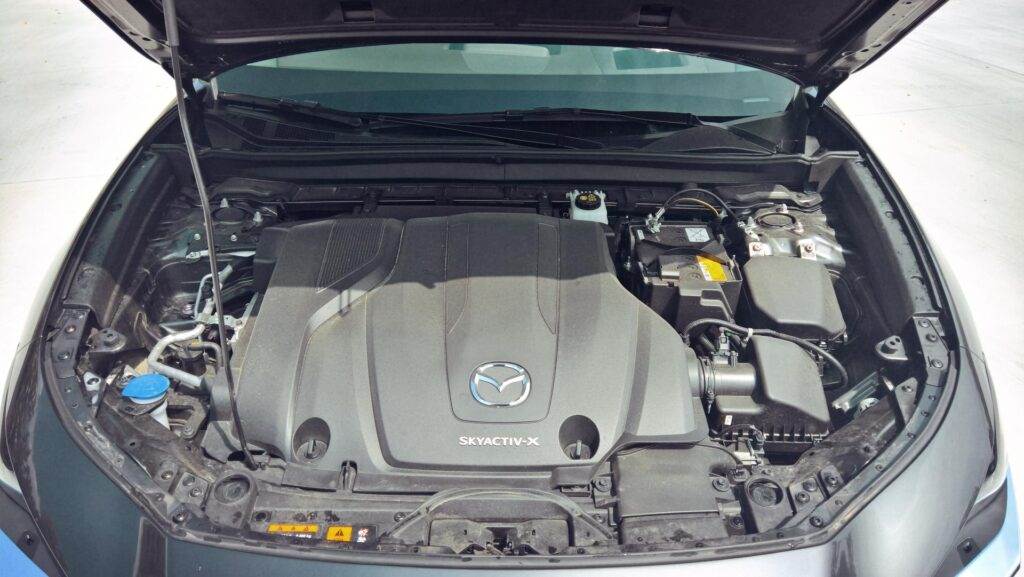
The four-cylinder engine with a displacement of 2 liters and an extremely high compression ratio of 16.3:1 can work in purely spark-ignition mode, but as much as possible, it tries to work “almost like a diesel” in SPCII (Spark Controlled Compression Ignition) mode. Simply put, ignite the mixture by pressing it like diesel, but still use spark plugs to ignite like a gasoline engine. If we want to be a little more precise – the cylinder sucks in air into which a small amount of fuel is injected and this extremely lean and very homogeneous mixture is subsequently compressed. As maximum compression approaches, another dose of fuel is injected near the spark plug and it is then ignited to help the mixture ignite effectively.

When maximum power is needed (or, conversely, at extremely low load and revs), the engine switches to the classic ignition principle of operation and starts using the throttle. It is fully open in the “diesel” mode and the regulation takes place by fuel dosing. The system prioritizes SPCII mode, in which Mazda claims the engine runs 80% of the time, which could be consistent with what it shows on the infotainment display (you can see how the system switches between modes in real time on the display, which also shows the activity hybrid system).
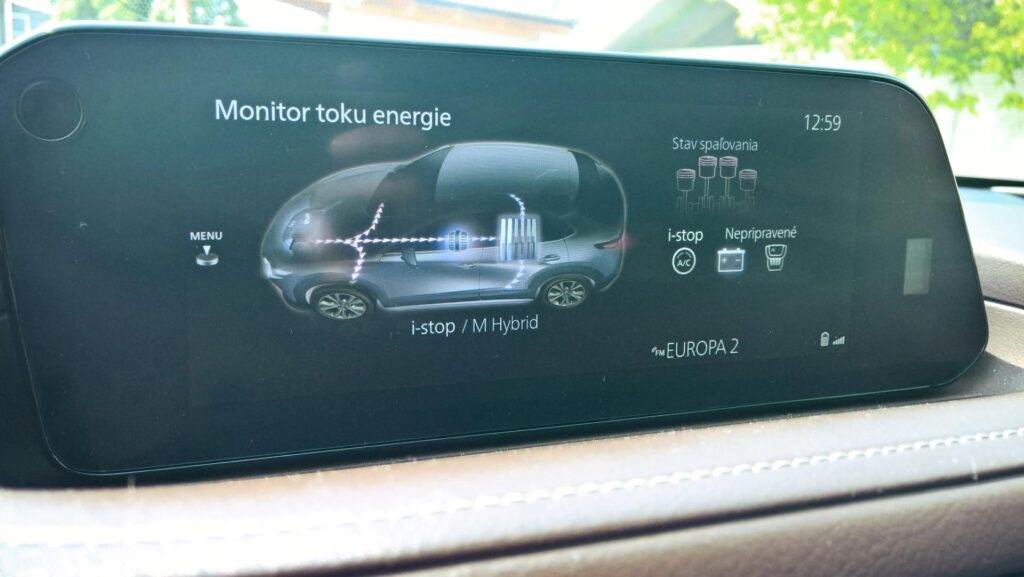
The mild-hybrid system, on the other hand, uses an ISG (integrated starter/generator) to recover and supply the li-ion battery. This then drives the electrical on-board systems, but also via the ISG ensures smooth start-up of the engine from the start/stop mode and, last but not least, provides a short-term boost for the drive in the event of a sudden demand for power. That is, primarily when starting from a standstill, demands for full acceleration and when shifting upwards, where it helps to cover up the performance delay at lower revs. In addition, a small Roots-type compressor with rotating cycloidal pistons supports all of this. This does not primarily serve to increase performance, but helps the engine in SPCII mode to provide enough air for the creation of a lean mixture at a high compression ratio.
To fit all of this together to work flawlessly is truly admirable. And it was not without small hiccups. Sometimes between switching modes and especially at lower loads, the engine tends to jerk and “hole” in performance. In more pronounced cases, it is remotely similar to the carburettor engine overloading after adding gas. However, it is nothing tragic and the average driver hardly notices it.

Also, despite its paper parameters, the CX-30 with a manual, 4×4 drive and Skyactiv-X engine is no shredder of asphalt. All these technologies result in a performance most reminiscent of a completely ordinary atmospheric gasoline engine – at lower speeds and loads, a beautifully quiet, relatively flexible and velvety performance. However, compared to turbo engines, it is also quite lethargic and lackluster.
If you want to draw some performance out of the X, you need to spin it, just like the classic atmosphere. Spin. And spin one more time. Between 2500-3000 revolutions it comes to life a little, above 4500 it switches to ignition mode and comes to life quite noticeably. Moreover, the maximum torque lies at three thousand and it delivers maximum power at six thousand revolutions. All in all, it remains to state that the CX-30 with this motorization subjectively gives a weaker impression when driving than the paper parameters would suggest. And with a four-wheeler, it’s even more striking.

However, Sky-X gets along well with the chassis. However, few people will buy a compact SUV to sweep the district with it at 6000 rpm. At the same time, the chassis is absolutely brilliant, as long as you put it behind your ears on winding and broken roads (with the tachometer needle permanently in the red field). On the other hand, it is a bit stiff in the city, on bumps it almost constantly transmits a gentle vibration to the body, and transverse joints are rewarded with a gentle thump from the rear axle. In addition, the highest equipment is automatically combined with eighteen-inch tires in the size 215/55 R18, which can have a significant part in the performance.
However, in everyday life together, the CX-30 and Sky-X work more than well. If we ignore the aforementioned occasional twitching and weaker dynamic performance, it’s basically very pleasant. In places you can feel the electric motor pushing, but otherwise the ride is completely quiet and calm as with any good atmosphere. The manual is a joy to shift, and the typically Japanese transmission shifts the gears almost entirely by itself. One would almost say, why all that complicated technology, when an atmospheric gasoline engine would be enough?! But because of the proclaimed diesel consumption…

But the reality is somewhat disappointing against the prospects of diesel economy. In short, it could be said that the CX-30 Skyactiv-X not only drives like a classic atmosphere, but also has such a consumption. With a manual six-speed transmission, the CX-30 took an average of 7.2 l/100 km in the city, 6.1 l/100 km on non-racing county roads. On the highway, it showed an average of a respectable 6.8 l/100 km. In the overall weekly average, the consumption settled at 6.8 l / 100 km, which is decent for 180 horses. Diesel numbers are not quite there, but the tank at the gas station still has a green gun and that is appreciated.
As far as consumption is concerned, it is said that it is unofficially known that for vehicles with Skyactiv and Skyactiv-X engines, with a mileage of over 10,000 km, the consumption will drop significantly. It is possible, unfortunately, both tested CX-30s that we tested had only half the kilometers covered, and even the “journalistic” ones.
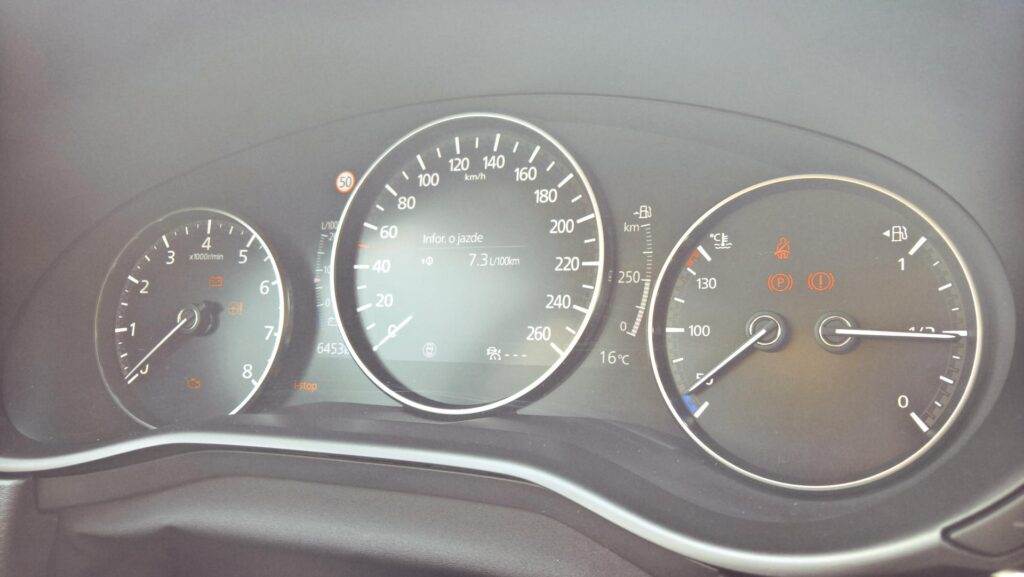
So does the CX-30 Skyactiv-X make sense? Do not expect diesel consumption from it (yet), otherwise it is a very pleasant engine. which, however, does not particularly stand out from the classical foundation. Of course, it is great that Mazda offers this option and the range of engines is thus more varied. Summing it up for myself, the combination of the basic Skyactiv-G and front-wheel drive with a manual, or an automatic for a more comfortable ride, would win for me. It is a cheaper variant, has lower consumption and both engines are very similar in terms of performance.
However, I am a fan of the new technology, but it would probably like to give it time to show what it can do. For me, Mazda has a thumbs up for looking for other ways than just going headlong into an electrical outlet. However, the MX-30 has already knocked on the door in the meantime. We will see…
| Technical specifications | Mazda CX-30 Skyactiv-X 184 AWD |
| Engine type: | Spark plug |
| Cylinders / valves: | 4 / 16 |
| Displacement (ccm): | 1998 |
| Highest power (kW(k) / rpm) | 132 (180) / 6000 |
| The highest twist. torque (Nm / rpm): | 224 / 3000 |
| Gearbox: | 6-st. manual |
| Acceleration 0 – 100 km/h (s): | 8,9 |
| Combined consumption – WLTP (l/100 km): | 4.5-5.6 |
Paragraph
[rl_gallery id=”9128″]


